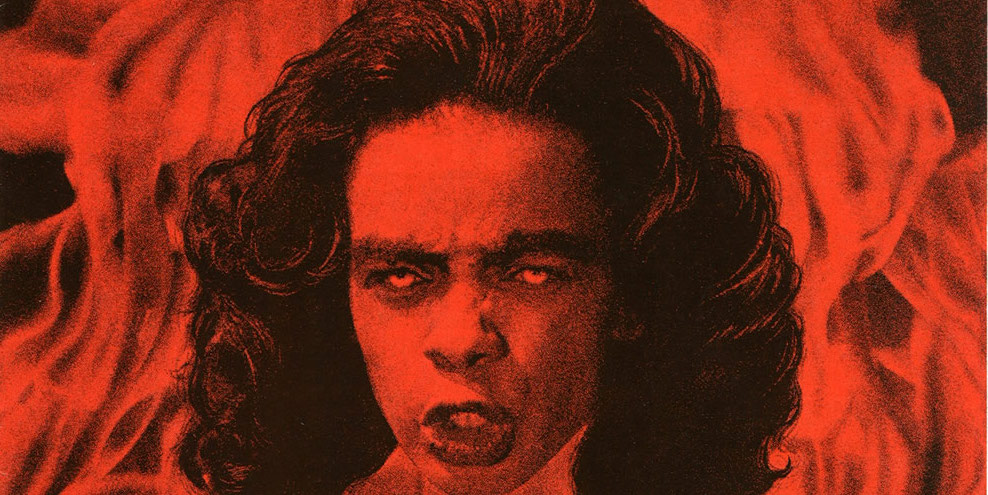
Fear is such a big, sad reality in the black community. Because of years of aggression towards us at large, it has become a significant part of our daily lives. Often it is used under the guise of preparing and protecting black people (or more specifically black children) for the real world. That fear manifests itself in plenty of ways — sometimes as the militant control over black children’s bodies, such as modes of dress, gender, and sexual expressions. Sometimes it manifests as sworn allegiance to conservative religious views to appease the domineering ruling class outside. It is why so many black people, I believe, live in a mental jail, ruled by themselves as their own warden. I don’t say this in smug absolution but from personal experience and observations. My Jewish friends have tenderly joked about their communities in relation have a “worrying problem.” In contrast, I believe ours is fear. I think it is why so many black people avoid horror movies.

Why pay to get scared? Why willingly make yourself exist in fear any more than you already have to? In conversations with black folk I both know and don’t, they have expressed their immediate discomfort when it comes to the subject of horror. “Why do you have to watch that?” voices echo. In the black community, horror movies often represent white naivety and exclusivity. Often set in the upper-middle class suburbs with limited people of color, the cast usually has the financial and social capital to risk themselves in dangerous and potentially deadly situations. The riskiness of the wealthy increases in reality as well, based on scientific evaluation and research. If horror movies do have a black person in it, they die early and way before any of the audience fully develops feelings or appreciation for their character and humanity. It is often a repeat cycle in greater media and culture: the black body is quickly consumed and discarded. It is a genre where the black person, if amongst white peers, is rejected and ignored in their discomforts of weird situations. Plenty of these movies lack the social commentary, however, to speak about how these realities do exist for people of color and more specifically black people in mostly white environments. Their feelings do get gaslighted; they are laughed at and ignored. Outside of “Get Out,” which most recently expanded on those ideas of silencing the oppressed, there is little to speak of these experiences in horror.

In addition it not being relatable to many, horror has had an overbearing feeling of spiritual cost to plenty. The Black community is overwhelmingly religious and evangelical in their view, particularly in America. In part one, I spoke a little of my religious upbringing. I grew up in a Pentecostal church which is most parallel in my brain (sarcasm aside) to the Puritans of New England. There is biblical absolution in many church atmospheres which prevent seemingly normal things like Halloween, Sailor Moon, and Pokemon cards. Because of this, horror was a complete taboo. My intrigue towards horror was an obvious “no” to my parents and so many of their peers. But not for me. I still found horror. To many black folks, horror may represent tangible spiritual darkness, but in my world it is the darkness of life and our realities. You are bluntly asked to face and explore the things we are made to hide because of social and religious norms. Our fear, lust, and desires for sex, love, hate, life, and death. Rejecting the things we fear will not make it easier to accept them when they arise. It just means you will not be emotionally or psychologically equipped. Avoiding death doesn’t mean it won’t ever come.

Confronting fears, in controlled settings like a movie theater or streaming at your house, is much better than having to do so in reality. Horror is not a preparation for death, but a dance with it. When going out to see a movie in theaters, you as a viewer are consciously making a choice to tune in and turn on: tuning into the scenario, suspending the logic to transform yourself into the storyline, and turning on to the possibilities. You are turning on your survival skills in a controlled setting. You are turning on your animal instincts — your gut reactions, the hair standing on your neck and arms, your heavy breathing. BDSM is similar in that way — being the object is choosing the dangerous and taboo but in a safe, controlled space. Expelling fears, traumas, and insecurities healthily in an environment where no one gets hurt unless they give permission. We are in an unfathomably vast and complex universe, and the vulnerability of that manifests in strange ways in human culture. They are not always the most progressive.
I am a massive horror movie fan — the type that barely watches other genres outside of pro-wrestling, actually — but I do believe horror and fear are healthy. It is okay to be afraid of the unknown, to be unaware. Having phobias, insecurities, and panic in situations is okay. It is even okay to bail on the things that scare you. It took me at least a decade to finish The Exorcist. I am terrified of heights and avoid rollercoasters. Yesterday, I watched The Exorcist and hopped a very tall fence yesterday. Embracing what you fear can give you a strength that you were unaware you are possessing. The balance that we all must learn is to make sure our fears and anxieties do not make us immobile in our lives.
Get to watchin’.

Movies to Watch: My Minds Playin’ Tricks on Me
1. Jacob’s Ladder (1990)
2. American Psycho (2000)
3. The Shining (1980)
4. Repulsion (1965)




